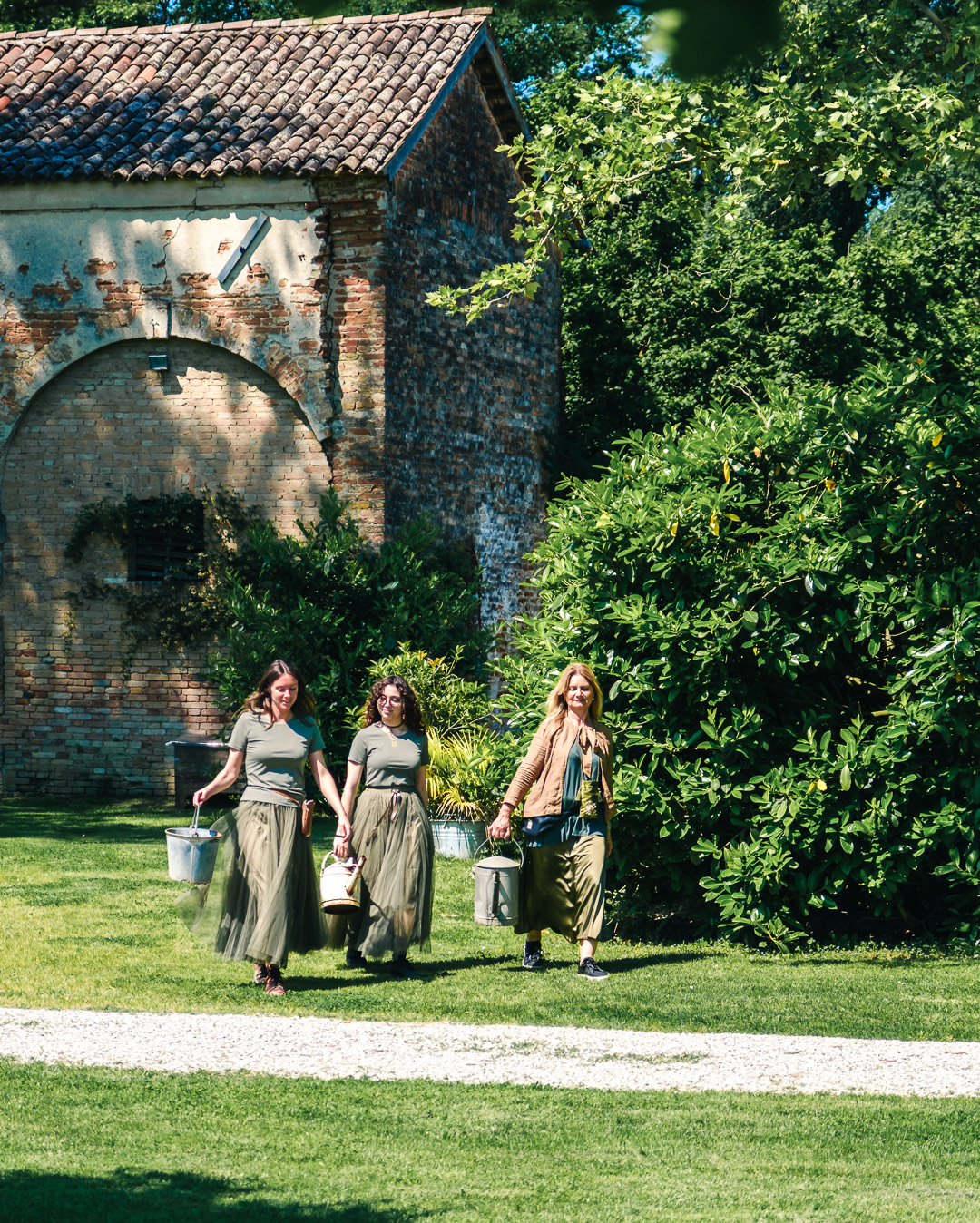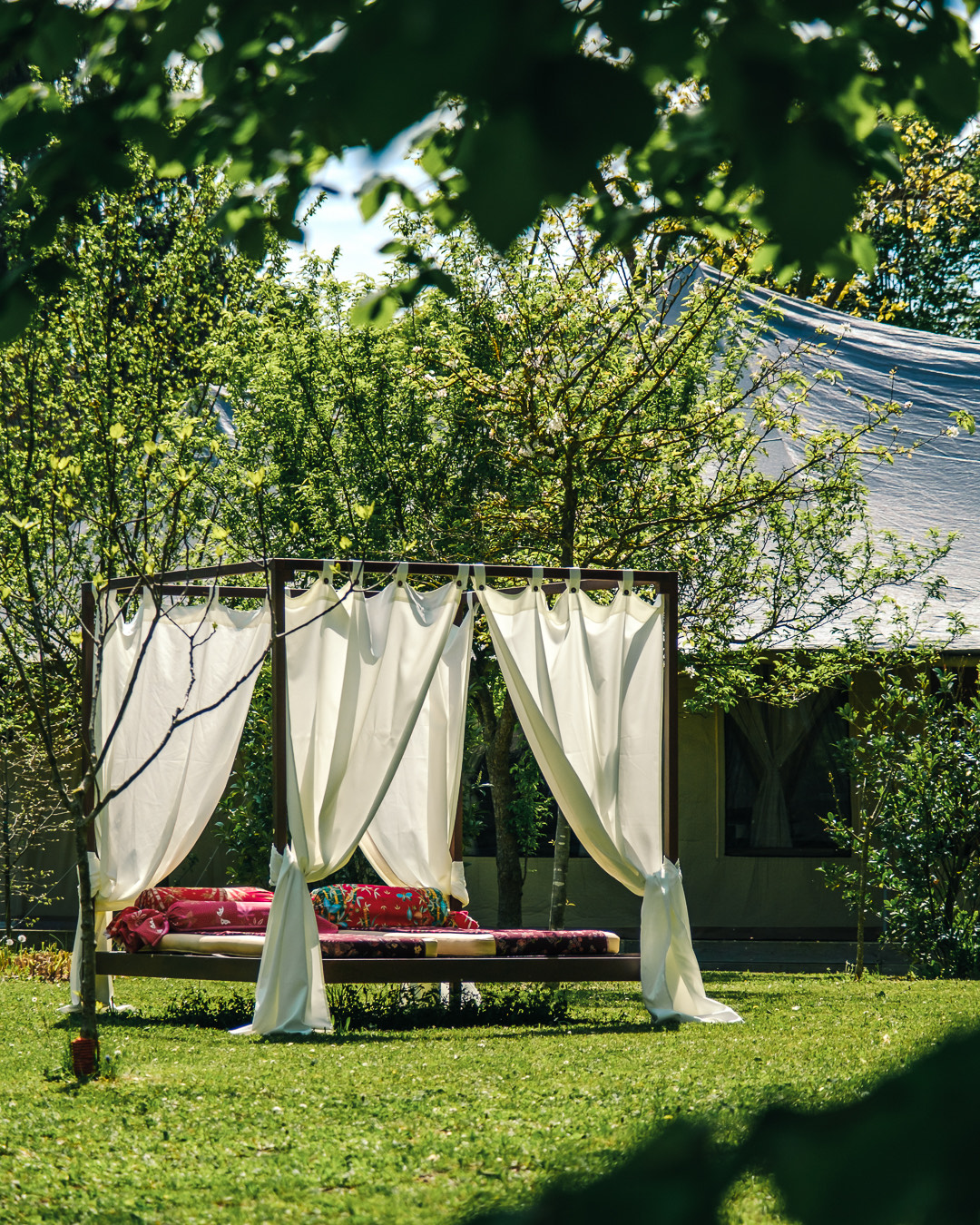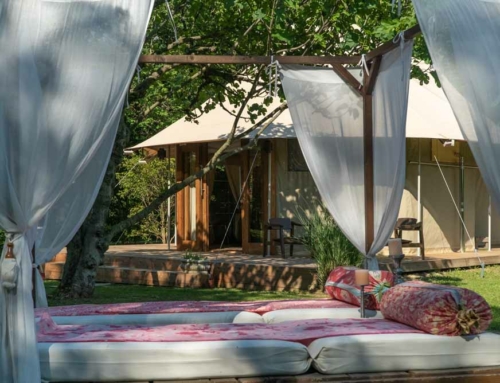Introduction: In the era of mass tourism, an increasing number of travelers are seeking authentic and environmentally respectful experiences. Glamping, which combines luxury with traditional camping, emerges as an ideal choice for those wishing to explore Italy sustainably. This article will guide you through the concept of “slow travel” and how glamping can be your gateway to an unforgettable and conscious adventure in the beautiful country, with a special focus on the Veneto region and the pioneering Glamping Canonici di San Marco in Mirano, Venice.
Definition of Slow Travel: Slow travel is an approach to tourism that encourages slowing down, immersing fully in local cultures, and experiencing a destination more deeply rather than rushing from one spot to another. This philosophy not only enriches the traveler’s experience but also helps reduce the environmental impact of their movements.
Glamping as a Gateway to Slow Travel: Glamping offers the perfect blend of comfort and nature, allowing travelers to enjoy the beauties of Italy with minimal environmental impact. Glamping facilities are often located in picturesque places, from which one can embark on explorations by foot, bike, or even horseback, experiencing the land at a human and sustainable pace.
Benefits of Glamping in Italy: Besides promoting slow tourism, glamping in Italy provides an experience rich in elegance and environmental respect. Guests can enjoy luxuriously equipped accommodations while being fully immersed in nature, from listening to the sounds of wildlife to waking up with breathtaking views.
Examples of Glamping Destinations in Italy:
- Veneto – Glamping Canonici di San Marco, Mirano: Located near Venice, and not so far from Padua and Treviso, Glamping Canonici di San Marco is the pioneer of glamping in Italy. This site offers a unique experience, combining Italian hospitality with the tranquility of the Venetian countryside, ideal for those seeking a relaxing and immersive travel experience.
- Tuscany: Known for its rolling hills and vineyards, it offers deluxe glamping with opportunities to participate in wine tastings and culinary tours.
- Sicily: Here, glamping merges with history, offering tents just steps away from archaeological sites and crystal-clear shores.
- Italian Alps: Perfect for adventure lovers, with glamping options that provide direct access to hiking, skiing, and river sports.
Cultural and Environmental Impact: By choosing glamping, travelers support local economies and contribute to the conservation of natural areas. This style of travel encourages the protection of Italy’s unique environments and promotes responsible tourism that respects local traditions and communities.
Tips for Travelers:
- Plan Ahead: Although glamping is synonymous with freedom, booking in advance can ensure availability at the best sites.
- Pack Consciously: Bring what is necessary and choose eco-friendly products.
- Engage Locally: Participate in experiences guided by locals for a deeper understanding of Italian culture and history.
Conclusion: Glamping in Italy is not just a mode of accommodation; it’s a gateway to a deeper and more respectful way of traveling. Choosing glamping not only guarantees a memorable holiday but also contributes to the health of our planet and the well-being of the communities that host you. Get ready to discover Italy like never before: at a slow pace and with every sense fully engaged.





